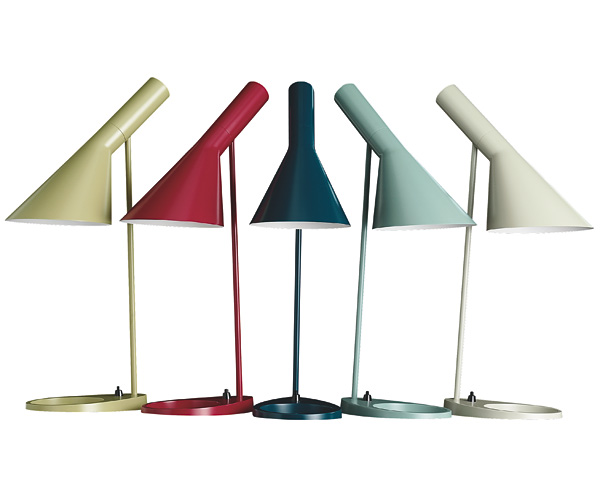Do you suddenly feel a warm embrace of serenity emanating from your computer screens? Are you tired of the soul-crushing experience of clutter or hoarding and know deep down inside there’s a “better way” of living through design? Well, dear Crasstalkers, today’s post will be one of many columns about a group of magical people who live in the magical lands of Scandinavia.
The term “Scandinavian design” first gained prominence in the 1950s and generally refers to the inimitable design aesthetics of the following four Scandinavian countries: Sweden, Finland, Norway and Denmark. The characteristics of Nordic design attempts to provide a balance between nature and functionality without forsaking quality and craftsmanship. Design lines are often clean, minimal, and organic.
So, let’s begin by briefly highlighting a few of the earliest contributors to Scandinavian design.
Tapio Wirkkala (Finnish, 1915-1985)
Wirkkala is often recognized as one of the leading pioneers of Finnish industrial art. While comfortable in an array of materials from stoneware to jewelry, he is most known for having contributed to new dimensions of Finnish glasswork. Tapio’s “bolle” series (1968) incorporated the “incalmo” technique, which fused two different types of glass into a single object resulting in an exquisite display of color and form.

Nanna Ditzel (Danish, 1923-2005)
“Nana nananana hey hey goodbye”
Trained as a cabinetmaker in her native Denmark, Ditzel furthered her studies in furniture design at the School of Arts and Crafts and the Royal Academy of Fine Arts in Copenhagen. Following her graduation in 1946, she established her own design studio together with her husband Jorgen Ditzel. A prolific designer in ceramics, jewelry, textiles and furniture, Nanna is often most recognized and celebrated for her “hanging chair” (1957).

Bruno Mathsson (Swedish, 1907-1988)
Born into a family of fourth-generation cabinetmakers (and to think people aspire to raising children in a multi-generational home filled with lawyers. Oh, the sheer horror! But I digress), Mathsson acquired an extensive knowledge for the qualities of wood and wood technology while working in his father’s gallery. Bruno continues to be one of the most celebrated Swedish furniture designers for functionality and is most known for his “Eva” (1941) and “Pernilla” (1944) chairs.

Grete Prytz Kittelsen (Norwegian, 1917-2010)
Formally educated at the Norwegian National Academy of Craft and Art Industry and at the Institute of Design of Chicago, Kittlesen was a goldsmith, enamel artist and designer. Wanting to bring good design to the masses, Grete pioneered the use of large-scale manufacturing methods in order to provide everyday affordable objects. She is world-renowned for her colourful enamel kitchenware produced by Cathrineholm in the 1950s and 1960s.

Arne Jacobsen (Danish, 1902-1971)
Working as an apprentice bricklayer before studying at the Royal Academy of the Arts, Jacobsen was both an architect and an industrial designer. While Arne is revered for his Egg chair (1958), the Swan chair (1958) and the Ant and Seven series (1952), I wanted to illustrate his dazzling talent for lighting. Few desk lamps have greater appeal (oh no they don’t) than the iconic AJ lamp (1957), which was designed for the SAS Royal Hotel in Copenhagen, Denmark.

Vivianna Torun Bülow-Hübe (Swedish, 1927-2004)
Bülow-Hübe is the most celebrated Scandinavian silversmith and the first woman silversmith in the world to gain international recognition. Formally trained at the Konstfack, the School of Arts, Crafts and Design in Stockholm, her fluid and innovative sculptural forms and use of semi-precious stones earned her clients such as Pablo Picasso, Brigitte Bardot (hopefully before she became a right-wing xenophobe), and Billie Holiday. Beginning in the mid-1950s, Vivianna established a long-term working relationship with the Danish company Georg Jensen.

Verner Panton (Danish, 1926-1998)
Graduating from the Royal Danish Academy of Fine Arts in Copenhagen, Panton assisted Arne Jacobsen on a variety of projects including his iconic Ant Chair from 1950 to 1952. Establishing his own design and architectural office in 1955, Verner’s designs were often experimental, colourful, and a departure from traditional Danish furniture and materials. His collaboration with Vitra culminated in one of the most famous chairs of the 20th century, the “Panton Chair.” (1960). A technical first, the “Panton Chair” (also known as the “S Chair” or as the “Stacking chair”) was made from a single piece of plastic.

Until next time, do say yes to that line of credit you’ve always wanted and get busy with collecting iconic Scandinavian design. Then, invite me over. Please.